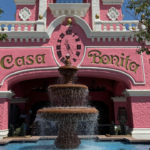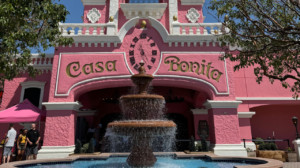Why settle for a typical restaurant marketing plan when you can write the ultimate restaurant marketing plan that can supercharge your restaurant growth and profits? This guide will help you through the process of writing an ultimate restaurant marketing plan for your restaurant.
KEY TAKEAWAYS
- Your Restaurant Marketing Plan is Your Guide.
- The 5 foundational ways to increase restaurant sales.
- More than just advertising – what a restaurant marketing plan should include.
- Umbrella Thinking: Setting Your Overall Themes
- Niche Campaigns: The Marketing Plans within THE Marketing Plan.
- Planning for Success: Delegation and Implementation
Your Restaurant Marketing Plan is Your Guide
So many restaurant owners never take the time to create a solid restaurant marketing plan. They are confident that their day-to-day decision-making skills have worked in the past to build their restaurant business, so it’s bound to continue to work in the future. Whatever they think and say on any given day is their restaurant marketing strategy.
But this reactive approach to marketing puts the long-term survival of your restaurant at risk. How will you reach the destination without a map to get there? Or will you even know that you have reached the destination when you get there? If you were planning a trip to Europe, you would take the time to research the sights to see, find the best way to get there and make reservations for your airline, hotels and transportation.
Doesn’t your restaurant deserve as much or more thought and planning for its ongoing success as your family vacation? A well-planned-out restaurant marketing plan is the roadmap to success in today’s competitive environment to capture your potential customer’s dining dollars.
Here are 5 key benefits of taking the time to create a yearly restaurant marketing plan for your business to follow.
- Strategic Direction: A restaurant marketing plan provides a clear strategic direction for everyone on your team. Without a clear goal to focus on, each decision on the many different marketing options and opportunities that arise through the year may make you zig or zag off the path to your one true goal. To see the importance of focusing on the goal ahead we only have to look at the farmer plowing their fields. To get a straight row, they focus on a marker across the field on the other side. If he looks down at the dirt or side-to-side, his plowed row will become crooked and not suitable for planting, but by never taking his eyes off that marker straight ahead he arrives at the other end of the field with a perfectly straight plowed row behind him.
Your restaurant marketing plan provides that directional beacon to share with your staff, so everyone is focused on working toward success in the same direction. - Cost-Efficiency: With a well-defined marketing plan you can budget properly and control your costs. I’ve worked with so many restaurant owners who make last-minute decisions on their marketing purchases. Their sales may have dipped last week, so when the local coupon mailer salesperson walks in they immediately sign up and put and ad in the next mailer. There’s no thought about how it fits into a larger marketing strategy, how if fits into a couponing strategy, and if the mailer even reaches their ideal target customer base.
Even if that coupon mailer is a good advertising option for this restaurant owner, an ongoing commitment for 6-months or a year would bring down the cost significantly as most publications offer reduced rates for contracts. It could also improve the return-on-investment (ROI) as the effectiveness of a coupon ad usually improves over time as readers are more likely to respond after viewing the ad multiple times. - Brand Consistency: With a restaurant marketing plan in place it’s far easier to maintain or create brand consistency. You can track where all your customer touchpoints are, from menus to signage to social media which provides an opportunity to confirm that everything is consistent with the look, feel, design and messaging style of your brand before it is seen by the public.
Building a strong brand through consistent application of your brand standards helps build connections to your restaurant brand in the mind of consumers. The goal is to have your brand so defined that the second a person sees one of your brand assets – whether it’s a social media post, billboard, or a to-go bag someone is carrying down the street – they’ll immediately recognize it as coming from your restaurant. This helps build top-of-mind awareness and increases the likelihood that they’ll think of you the next time they’re making their dining choices. - Ability to React and Adapt: The day-to-day reality of operating a restaurant requires flexibility to rapidly adapt to changes that are thrown your way. This might be an increase in food costs, a large local employer closes, you experience a labor shortage, or God-forbid, a pandemic hits the nation. Despite the fact that you have created the ultimate restaurant marketing plan for the year, change happens. But by having that complete plan, adapting to the new reality is much easier.
With your marketing plan you have the ability to have your eyes on everything in one place. It removes the stress of worrying about what you might have forgotten to do or change or modify. You can be agile and react to the new realities to make changes to your plan, so your restaurant remains relevant and competitive in your market.
Think of the rudder on a huge cruise ship. It’s a tiny percentage of the size of the entire ship, yet it sets the direction and changes to it will move the whole ship in an entirely different path. Your ultimate restaurant marketing plan is your restaurant’s rudder! - Measurements of Success: By setting goals and performance targets for each initiative within your restaurant marketing plan, you will be able to measure the success of your marketing efforts. To have the greatest chance of reaching your goals, take the time to turn your vague goals into SMART goals. SMART is an acronym that stands for specific, measurable, achievable, realistic, and timely.
Specific goals have a measurement attached to them. Instead of saying we want to sell more apple pies in September, you could create a specific goal of increasing apple pie sales by 15% over last year’s sales numbers.
Measurable goals are ones that have some sort of objective way to measure their success. This might be a deadline, a number, a percent change, or some other measurable element.
Achievable goals means that the goal shouldn’t be outside the realm of what’s possible with your available resources. It’s always good to stretch and make goals that take require commitment and effort to reach, but they still need to be achievable.
Realistic goals are closely related to Achievable goals. If you have one restaurant location and create a goal to open 99 more locations this year, that is not realistic in most cases. Unrealistic goals will lose the support and effort needed from your staff and associates who might be required to help you reach that goal.
Timely goals need a time-limit attached to them. This is actually easier to accomplish in a restaurant marketing plan as these goals are usually items to focus on in the coming year, versus a business where their plans might be longer-range. But each goal should have a deadline attached to assure their completion.
The 5 foundational ways to increase restaurant sales.
While there are hundreds of different tactics and methods you can use for marketing, when you get down to it everything can be categorized into 5 foundational ways to increase sales and profits for any restaurant. These are…
- Increase Check Average
- Increase Frequency of Visits
- Increase Group Size
- Attract New Customers
- Create Additional Distribution Points
Every type of advertising, promotion, public relations, social media, etc., etc. can be put into one of these categories. Take a minute to think about your favorite marketing methods and see where they might fall within these areas.
Increase Check Average: This is often accomplished through menu engineering, highlighting add-ons and high-margin items, and upselling appetizers, desserts and beverages.
Increase Frequency of Visits: If existing customers visit one extra time a month, it does wonderful things to your sales and profits. This can be encouraged through bounceback coupons, frequency programs, and promotions.
Increase Group Size: Larger parties means larger sales. These can be encouraged through promotions for ‘celebration events’ that usually involve a larger party, such as birthday dinners, after-game team gatherings, and even monthly meetings of local groups such as Kiwanis or Toastmasters.
Attract New Customers: This usually involves out-of-restaurant promotional efforts such as advertising, social media, and community events to introduce your restaurant to potential customers within your target audience.
Create Additional Distribution Points: While this might be opening a new location, there are many other methods to achieve a wider distribution without the investment of time and money an additional location requires. Options include catering, foodservice contracts, a food cart or contract, local stadium or event booths, and even grocery retail options.
These five foundational ways to increase sales and profits are the key elements we’re going to use to turn a regular restaurant marketing plan into an ultimate restaurant marketing plan.
More than just advertising – what a restaurant marketing plan should include.
Before we dive into creating your marketing plan, let’s pause and acknowledge the prerequisite for restaurant success, and that first step is to have your restaurant operations working properly.
Marketing can get a customer through the door the first time, but poor operations can send them away unhappy, never to be seen again. In a successful operation, Marketing brings them in and Operations brings them back. Because of that, EVERYTHING truly is Marketing. Is there trash in the parking lot when they first arrive? Is the floor sticky when they walk through the lobby? Is the cook standing out in front smoking? Clearly there are a lot of things that shape the customer’s opinion of your restaurant.
But we shall continue under the assumption that your operations is brilliant – the hot food is hot and the cold food is cold and your staff provides exceptional service.
Your restaurant marketing plan document should define all the following items for each campaign or initiative you are planning to accomplish. The easiest way to track this is to create a spreadsheet with an overview worksheet that displays a yearly calendar to view all of your campaigns at a glance. Then you can create individual worksheets for each month or campaign that provides the breakdown details for each specific campaign. There are also some good project management tools that might work well for you to track your restaurant marketing plan.
Here are the sections your plan should include for each marketing campaign to fully document your planned marketing activities:
The Facts
- Overview: Describe the campaign. For example, “Introduction of Glazed Pecan Southern-Style Waffles.”
- Dates: Provide the launch dates and if it’s a promotion, how long it will run.
- Dayparts: Does this target specific dayparts?
- Target Audience: Who is the ideal guest group or target audience for this?
- Marketing Goals and Objectives: What are you trying to accomplish? Use the SMART Goals to provide specific, attainable and measurable goals.
- Measurement: How will success be measured?
- Feedback Loop: What methods will be used to receive feedback? Will you need to do customer satisfaction surveys? Staff surveys? Call guests?
- Marketing Budget: What is the allocated budget to accomplish this planned item?
In-Store Marketing
- Menu & Pricing: Is this a limited-time offer or will it be added to the permanent menu? Do menus need to be reprinted? How will the pricing affect profit margin?
- Point-of-Purchase Messaging: Do we need to print posters, window clings, outdoor banners, other P.O.P signage? What creative way can we engage our loyal customer base?
- Staff Training: Does this require new products in the kitchen? What do we need to train kitchen staff on? What training will servers require? Do we have selling scripts to give suggested talking points to the customer service staff?
Online Marketing
- Website: How does our website need to be modified for this marketing effort? Can we do a behind-the-scenes or a special blog post.
- Social Media Marketing: Do we need to design social posts for this? Are there videos we can produce to support this? How often do we want this posted and on which social media channels?
- Email Marketing: Should this be featured in a customer email campaign?
- Text Marketing: Is this appropriate to send to our SMS marketing list?
- Online Advertising: Will we be investing in search engine advertising or social media advertising reaching our ideal customer to support this marketing initiative?
- Influencer Marketing: Is this a feature we can promote through our network of social influencers, or should we pay to promote through influencers?
Offline Marketing
- Traditional Advertising: Should this be supported with a media buy of local television or radio? Is this messaging good for direct mail or local coupon mailers to attract first-time customers?
- Public Relations: How can we create PR opportunities to support this? Can we create a story hook to get coverage through local media?
Community Engagement
- Business Partnerships: Are there local businesses that would be a good fit for co-promotion of this item?
- Charity Partnerships: Can we support our charity partners somehow through this marketing initiative? Is there a special event that would tie into this?
- Vendor Support: Is there a way to utilize vendor resources to support this campaign?
There are some additional categories that should also be included in your marketing plan to document your marketing strategy, as they have an ongoing affect on your profitability. These include…
- MENU PRICE INCREASES – Your expenses never seem to go down so it’s wise to just plan your price increases into your yearly plan instead of reacting to rising costs and then randomly raising prices. A price increase should coincide with a reprinting of your menu, as you never want to mark off or put stickers over old prices because that just draws attention to the price increase.
Many operators spread out their price increases throughout the year within different categories. For example, in the 1st Quarter they may raise prices on Appetizers and Desserts, then 2nd Quarter its Entrees and Salads. 3rd Quarter they may not raise any prices, then for the 4th Quarter they raise prices on beverages. - SERVER CONTESTS – These can help increase sales within any promotion, but they also build rapport and the culture of your work environment. Make them fun. Make them fair. And reward the hard work of your restaurant team.
Umbrella Thinking: Setting Your Overall Themes
The best place to start is to begin with a higher-level view instead of thinking about specific marketing opportunities or strategies that you want to implement in the coming months. This can best be accomplished by setting themes for each month or 6-week promotional periods.
This shouldn’t be done in a vacuum where you’re just pulling topics out of thin air. Think about what the general public focuses on during that time frame. Often that is related to seasons or to upcoming holidays.
For example, in January many people resolve to lose weight in the new year. That’s why January is the biggest month for gyms and fitness centers to sign up the largest number of new customers. You can tap into this trend with your theme for January…
JANUARY – New Flavors for the New Year!
- We’re launching the New Year with New Flavors!
- Taste our healthy new “Light Style Lifestyle” entrees.
- Indulge with our “low calorie – high flavor” drinks and dessert.
Continue by creating themes for the rest of the time your restaurant marketing plan will cover. A sample year of themes for a restaurant could include these items:
- JANUARY – “New Year. New Flavors.”
- FEBRUARY – “Love, Romance and Chocolate” for Valentine’s Day.
- MARCH – “Luck of the Irish” for St. Patrick’s Day and/or March Madness.
- APRIL – “Spring into Freshness” for Easter and/or locally sourced ingredients.
- MAY – “Cinco de Mayo” Mexican-infused fiesta.
- JUNE – “Summertime BBQ Sizzle” featuring grilled items.
- JULY – “Red, White, and Blue Cheese” with patriotic themed summer salads.
- AUGUST – “Worldwide Cuisine” celebrating flavors from around the world.
- SEPTEMBER – “Apple a Day” back to school fall harvest flavors.
- OCTOBER – “Pumpkin Spice-Tacular!” with Fall tricks and treats.
- NOVEMBER – “Giving Thanks” with the tastes of the holiday.
- DECEMBER – “Holiday Cheer” featuring holiday-themed menu items.
Of course your themes should be consistent with your restaurant category. A white-table cloth Italian restaurant is probably not going to feature a Cinco de Mayo theme! Also, the length of time of a promotional period can vary based on your needs or seasonality.
It might make sense for your restaurant to have one large summer-themed promotion that lasts from June through August. Or perhaps you operate in a winter resort area and sales are low from May through September. Based on sales and seasonality, the expense of rolling out a new promotion each month may not be the best strategy. Remember, your restaurant marketing plan should lay out a plan that works best for your business, to increase sales and profits.
Once your overall categories have been determined, it’s much easier to brainstorm items that will become the tactics and strategies to support the theme.
Niche Campaigns: The Marketing Plans within THE Marketing Plan.
The traditional way to create a restaurant marketing plan is to pull out a calendar and start by writing in the items that you’re already doing…
- I’ve got Valpak coupon mailers dropping in February, April, June, September, October, November and December…
- I’ve got a Mother’s Day Brunch promotion in May and use email marketing to announce it…
- I do a menu price increase in April and September to try to avoid negative reviews…
But if you do things like you’ve always done things, you will only get the same results. If those results aren’t delivering the guest counts and sales growth that you desire, it’s time to approach your restaurant marketing plan in a different manner.
We’ve already gone through the first step in creating an Ultimate Restaurant Marketing Plan, which is to determine your Themes for each of your promotional periods.
Step number two to develop your marketing strategy is to take a deep dive into each of your chosen Themes through the lens of the 5 different ways to grow sales and profits. This will result in as many as 5 niche marketing plans under each Theme within your large overall restaurant marketing plan.
I know this may sound confusing, but it’s really quite simple. For example, let’s say your theme for a period is “Summertime BBQ Sizzle.” To flesh this theme out, you’ll create mini-plans that address each of the following…
- Increase Check Average: What can we do to increase check average with a Summertime BBQ theme? Perhaps our featured dish is “Burnt-Ends Brisket” which can be priced at a higher level that delivers a greater profit margin.
- Increase Frequency of Visits: How can we get loyal customer to come in more often during the Summertime BBQ promotional period? Do we offer 3 different entrees, so they’ll want to try them all? Or do we distribute bounceback coupons to dinner guests that provide a discount when they return for lunch within a week? Or do we rollout a loyalty program?
- Increase Group Size: What’s more natural for a Summertime BBQ than a Family Reunion or Church Picnic. Perhaps we promote a ‘Family-Style Dinner’ to our restaurant customers to bring in larger groups?
- Attract New Customers: The BBQ food is the main attraction, so we just need to spread the word. We could budget for an ad campaign where we shoot a video ad that features the delicious food, then do media buys to run the ad both online and on local cable channels targeted to our ideal customers.
- Create Additional Distribution Points: While we’re promoting the taste of an authentic American BBQ, we could also support real summertime BBQ’s by offering catering services. Same food but in disposable chafing dishes. Could also do on-site serving or partner with a Food Truck.
Once you brainstorm ideas for each of the mini-plan categories, that’s when you fully flesh out the plans for that Theme period by going through the complete list of marketing tools to fill in the blanks in your restaurant marketing plan spreadsheet.
Start with “The Facts,” the complete the plan for In-Store Marketing; Online Marketing; Offline Marketing; and Community Engagement so you end up with a completed section of your restaurant marketing plan for that promotional period.
Planning for Success: Delegation and Implementation
As your completed plan starts to take shape, it quickly becomes obvious that there’s far too many tasks to complete by yourself. For single-unit and smaller restaurant chains, there are no resources available to hire a full-time marketing director or agency. That’s when it’s time to enlist help and assign tasks to staff members and/or outside assistants. Many hands make light work.
To track this, create an extra column on your marketing plan for ‘Responsible Person.’ This is where you will list the person who is assigned to guarantee that this task will be completed on time and on budget.
The last step for Implementing your Ultimate Restaurant Marketing Plan is to break down each item on the plan into the steps required to prepare that item for launch. This is where a project management software or website becomes very useful.
Let’s look at an example of creating a Table Tent for your upcoming promotion. The essential information you’ll need is the date the final product is needed at your restaurant, then you can back-date each of the steps by calculating the time needed to complete that step.
| PRODUCTION STEP | DUE DATE | DURATION |
| Food Photos | May 1 | 1 week |
| Table Tent Design | May 8 | 1 week |
| Management Approval | May 15 | 2 days |
| Revisions/Files to Printer | May17 | 3 days |
| Printing /Bindery | May 22 | 1 week |
| Ship to Restaurant | May 29 | 2 days |
| Promotion Begins | June 1 |
After all the steps involved to implement your restaurant marketing plan are broken out with dates, you will have a very detailed marketing calendar roadmap that everyone can follow to engage current customers and attract potential customers. You will then have a way to move your restaurant toward more guests, more sales and more profits with your Ultimate Restaurant Marketing Plan!




























